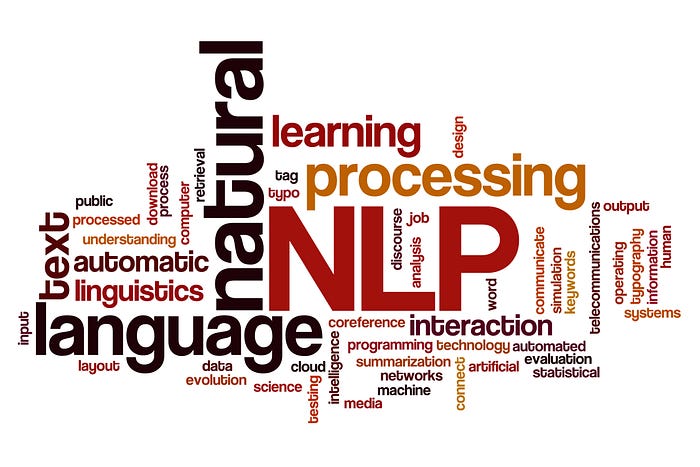Roadmap for Natural Language Processing (NLP) A-Z.

Phase 1: Foundations
- Mathematics and Statistics:
- Linear Algebra: Vectors, Matrices, Eigenvalues/Eigenvectors
- Calculus: Derivatives, Integrals, Gradient Descent
- Probability and Statistics: Distributions, Bayesian Inference, Hypothesis Testing
2. Programming:
- Python: Basic syntax, Data Structures, OOP
- Libraries: NumPy, Pandas, Matplotlib/Seaborn for data manipulation and visualization
Phase 2: Introduction to NLP
- Basic Concepts
- Text Processing: Tokenization, Lemmatization, Stemming
- Regular Expressions: Pattern matching in text
2. Core NLP Tasks
- Sentiment Analysis
- Named Entity Recognition (NER)
- Part-of-Speech (POS) Tagging
- Text Classification
3. Key Libraries
- NLTK: Basics of text processing.
- SpaCy: Advanced text processing, NER, POS tagging.
- TextBlob: Simplified text processing.
4. Data Preprocessing
- Handling Text Data: Cleaning, Normalization, Removing Stopwords.
- Feature Extraction: Bag of Words (BoW), TF-IDF, Word Embeddings.
Phase 3: Intermediate NLP
- Machine Learning Basics
- Supervised Learning: Regression, Classification.
- Unsupervised Learning: Clustering, Dimensionality Reduction.
2. NLP Models
- Traditional Models: Naive Bayes, SVM, Decision Trees.
- Evaluation Metrics: Accuracy, Precision, Recall, F1-Score, ROC-AUC.
3. Deep Learning Basics
- Neural Networks: Basics, Activation Functions, Backpropagation.
- Frameworks: TensorFlow, PyTorch basics.
4. Advanced Feature Extraction
- Word Embeddings: Word2Vec, GloVe, FastText.
- Document Embeddings: Doc2Vec
Phase 4: Advanced NLP Techniques
- Sequence Models
- Recurrent Neural Networks (RNNs): LSTM, GRU
- Sequence-to-Sequence Models: Encoder-Decoder architectures
2. Attention Mechanisms
- Attention Mechanisms: Introduction, Self-Attention
- Transformers: Understanding the architecture, BERT, GPT
3. Advanced Applications
- Machine Translation
- Text Summarization
- Question Answering
- Dialogue Systems
4. Transfer Learning in NLP
- Pre-trained Models: BERT, GPT-2/3, RoBERTa.
- Fine-Tuning Pre-trained Models for specific tasks.
Phase 5: Expert Level
- Research and Development
- Reading NLP Research Papers
- Implementing State-of-the-Art Models
- Experimentation and Hyperparameter Tuning
2. Advanced Deep Learning Techniques
- Reinforcement Learning for NLP
- Generative Models: GANs, VAEs
3. Scalability and Optimization
- Deploying NLP Models: Serving models, API integration
- Optimizing Performance: Quantization, Pruning, Distillation
4. Ethics and Fairness in NLP
- Bias in NLP models
- Ethical considerations and responsible AI.
Phase 6: Practical Experience and Projects
- Capstone Projects
- Sentiment Analysis on social media data
- Chatbot Development
- Real-time Language Translation System
- Summarization of News Articles
2. Contributions and Networking
- Contributing to open-source NLP projects
- Participating in NLP competitions (e.g., Kaggle, Hackathons)
- Engaging with the NLP community (Conferences, Meetups).
Recommended Resources
Books:
- “Speech and Language Processing” by Jurafsky and Martin
- “Natural Language Processing with Python” by Bird, Klein, and Loper
- “Deep Learning for Natural Language Processing” by Palash Goyal et al.
Online Courses:
- Coursera: Natural Language Processing Specialization by Deeplearning.ai
- edX: Natural Language Processing with Python
- Udacity: Natural Language Processing Nanodegree
Websites:
- Towards Data Science
- Medium (NLP Topic)
- ArXiv.org for latest research papers
Communities:
- Stack Overflow
- NLP Slack groups and forums.
Conclusion:
This roadmap provides a structured approach from foundational knowledge to advanced expertise in NLP. Each phase builds on the previous one, ensuring a comprehensive understanding of both the theoretical and practical aspects of NLP.
